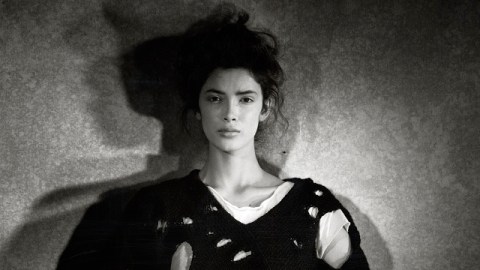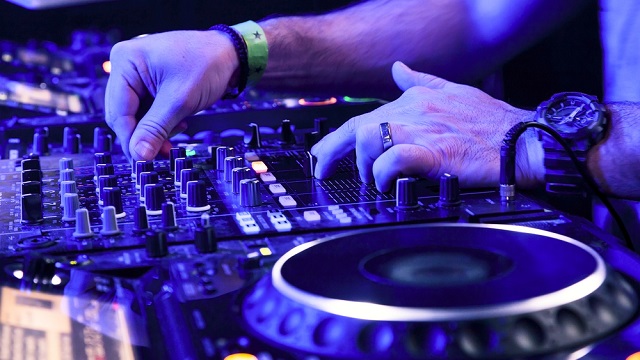Can There Be Such a Thing as Punk Couture?

With all apologies to Neil Young, this is the story of Johnny Rotten, or at least the story of his clothes. PUNK: Chaos to Couture, which opens today at the Metropolitan Museum of Art and runs throughAugust 14, argues that Punk rock and its accompanying look didn’t fade away, but rather lingers on in our culture in an important way. Begun as a raised middle finger to the establishment, Punk seems a strange bedfellow for an esteemed institution such as the met or a fancy shmancy terms such as “couture.” Can there be such a thing as Punk couture?
I was a non-Punk teen in the late 1970s/early 1980s heyday of Punk. It was fascinating to watch older siblings of friends transform into these alien creatures reeking of (although I didn’t know the term yet) alienation. All I knew was that the music was loud, the clothes and hairstyles were different, and my parents wouldn’t have it in their house. (I was in the high school marching band, the most un-Punk thing conceivable at the time.) In the three decades since that rebellious beginning, Punk’s taken on a sepia-colored nostalgia and almost respectability for some. “Punk’s signature mixing of references was fueled by artistic developments such as Dada and postmodernism,” argues Thomas P. Campbell, Director and CEO of the Met, “so it makes sense to present this exhibition in a museum that also shows the broader output of those movements. Indeed, that dialogue between art and fashion is what makes The Costume Institute so singular.” Just as the art history canon’s embraced Dada as an important link in the modern art evolutionary chain, Punk’s just another link in the evolution of “the dialogue between art and fashion.”
For several years now, the Met’s Costume Institute, led by curator Andrew Bolton, has transformed the costume department that once languished in the museum’s basement into a primetime, penthouse player. 2011’s eye-opening blockbuster Alexander McQueen: Savage Beauty and last year’s Schiaparelli and Prada: Impossible Conversationsboth demonstrated that fashion can be a popular, revitalizing force as well as a major draw for museums. (Exhibition design consultant Sam Gainsbury and mannequin head treatments and masks designer Guido Palau, who both worked on the McQueen show, reunite for PUNK.)
Bolton holds high hopes for PUNK. “Since its origins, punk has had an incendiary influence on fashion,” he explains. “Although punk’s democracy stands in opposition to fashion’s autocracy, designers continue to appropriate punk’s aesthetic vocabulary to capture its youthful rebelliousness and aggressive forcefulness.” It’s important that he acknowledges the “opposition” between “punk’s democracy” and “fashion’s autocracy,” but how well that tension is resolved remains to be seen.
Because Punk itself revolved around the antiestablishment personalities who first embodied it, it’s fitting that PUNK’s organized into seven galleries each with its own designated Punk “hero.” The first gallery harks back to New York City’s infamous CBGB club, with figures such as Blondie, Richard Hell, The Ramones, and Patti Smith providing the heroics. The next gallery crosses the Atlantic to London’s Seditionaries (aka, Sex) boutique, where Malcolm McClaren and Vivienne Westwood designed the clothes that early customers such as The Sex Pistols purchased and wore. The third gallery, titled “Clothes for Heroes,” embodied by early Punk fashion model Jordan (aka, Pamela Rooke), features designers who pushed McLaren and Westwood’s artistic ideas further into the world of social realism. This room is where the battle between Punk and the Reaganism and Thatcherism on the respective American and British sides of the Atlantic gets replayed in studs, safety pins, and razor blades.
The final four galleries examine Punk’s Do-it-yourself, or D.I.Y. approach. “D.I.Y. Hardware” elevates Johnny Rotten’s partner, Sid Vicious, as the patron saint of studs, spikes, chains, zippers, padlocks, safety pins, and razor blades. “D.I.Y. Bricolage” poses Wayne County (aka, Jayne County) as the hero who embodies Punk’s recycling of materials and even consumer culture. County spent some time in Andy Warhol‘s The Factory and may have borrowed Warhol’s gift for looking askew at pop culture. The Clash takes center stage in “D.I.Y. Graffiti and Agitprop” thanks to their anti-Thatcherite lyrics and imagery. The Clash’s classic song “Career Opportunities” seems as appropriate today as an attack on a stagnant global economy effects on people, especially youth, as it was in 1977. Finally, in “D.I.Y. Destroy,” Johnny Rotten’s torn clothing becomes a physical manifestation of Punk’s deconstruction of all the establishment icons it wanted to rip apart.
PUNK connects the past and present by juxtaposing original punk clothing with more recent fashion borrowing not just Punk elements, but also Punk thinking. Rei Kawakubo’s 1982 sweater for Comme des Garçons (shown above) took Johnny Rotten’s ripped clothes and put them on the runway. A who’s who of high fashion—Burberry, Calvin Klein, Dior, Dolce and Gabbana, Karl Lagerfeld, Helmut Lang, Alexander McQueen, Prada, Yves Saint Laurent, Givenchy, Gianni Versace, and more—stand toe to toe with the Punk past and more than hold their own.
But does Punk lose its soul in this connection? Can you rub elbows with the establishment without rubbing off your Punk edge at least to some degree? Perhaps Punk will always be Punk, regardless of how we try to interpret and understand it in retrospect. Iggy Pop still performs Punk music at 65 without a shirt on, proving that Punk’s in the mind, heart, and soul, not necessarily in the clothes themselves. Fashion reality show Project Runway just crowned Michelle Lesniak Franklin their Season 11 champion for a collection the judges called “steampunk,” one of the offshoots of the original movement. Earlier this year, one fashion critic pointed to steampunk as the next big thing in fashion. So, maybe Punk is rising once more. As the global economy harks back to the dark days of Reagan and Thatcher’s economic policies, perhaps Punk will make a comeback as the look and voice of a new generation. If so, PUNK: Chaos to Couture deserves some credit for introducing Punk to a new audience and reminding people that something as simple as a strategically placed safety pin or torn shirt can mean so much.
[Image: Sweater by Rei Kawakubo (Japanese, born 1942) for Comme des Garçons (Japanese, founded 1969), 1982. Courtesy of the Metropolitan Museum of Art. Photograph by Peter Lindbergh.]
[Many thanks to the Metropolitan Museum of Art for providing me with the image above and other press materials related to PUNK: Chaos to Couture, which runs through May 9 through August 14, 2013.]





